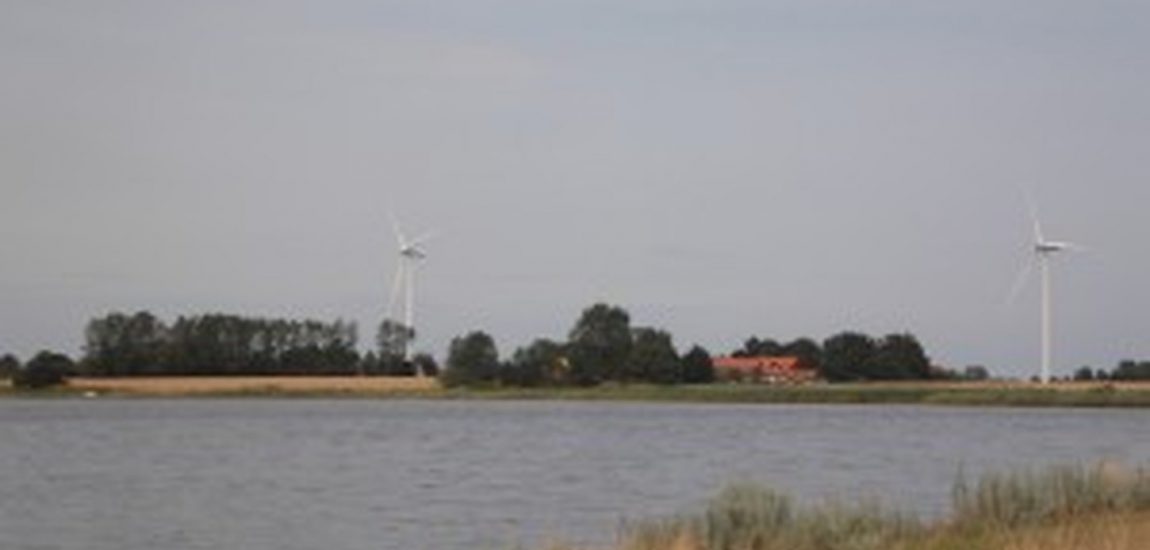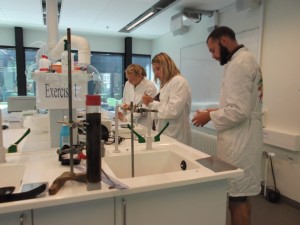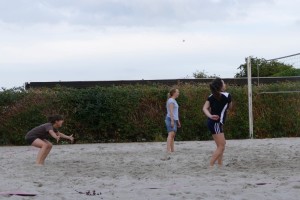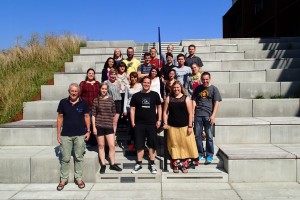
EAG sponsored student in Odense
The Aquatic Microbial and Molecular Ecology (AMME) course has been held at the University of Southern Denmark (Odense University before it merged with other institutions) since 1992. It started as a MSc course and it turned into a PhD course in 2000. I was looking for some interesting courses to learn new lab techniques and reinforce important aspects of my PhD project. I read the description of the AMME and it was like reading my PhD topics in a module format.
What I did not know when I left Leeds, was that I was about to enjoy a real summer sunshine for three entire weeks! Before heading to Odense, I had the chance to visit Copenhagen. Only one step out of the train was needed to start feeling the soul of the city, the bike culture, and the youth buzzing… Like in other central or northern Europe cities, it feels like, despite the crazy crowd, everything is under control, everything is on time.
The course could not start in a better way: fieldwork! We visited the two sites in the Odense Fjord where we based our study on. First we learnt from the professors how to collected nice sediment cores. It was not that easy, but eventually we got them. It was a good chance to see how the locations looked like; and also, I have to say that you can´t miss any of the few opportunities you have to wear waders in your life. It is always fun! To finish the course kick-off, everybody was invited to a barbeque at the Mexican Garden (unofficial name of one of the many green spots the SDU has). Since then, this garden, situated in the middle of the university laboratories, was ours!
First day, first alarm, first breakfast and first call for coffee… It was so nice outside, so cycling to uni was not that bad even that early! In a few days the routine was set and we were full of energy for lectures and for carrying out all the labwork. The participants were split up in teams, and mine (Team 2) was, in fact, awesome. We got along very well since the beginning and I think we complemented each other, not only in terms of scientific background or strengths, but also in terms of personalities and working dynamics.

The first half of the course was very intense. We carried out the big labwork load. We started with the molecular biology as we needed to send away our DNA samples for T-RFLP analysis. With these data we did a comparative analysis of the microbial diversity of the two study sites. Then we also determined the abundance of nitrifying microorganisms by quantitative analysis of the functional gene ammonia monooxygenase (amoA gene). The geochemistry exercises included: basic sediment characterisation; analysis of gases and nutrient fluxes; isotope techniques to analyse denitrification (with 15N isotope pairing technique) and sulphate reduction (by the radioactive isotope 35S technique); measurement of sediment redox and porewater profiles; particulate iron extractions; analysis of potential nitrification; and determination of O2 microdistribution and diffusive O2 exchange in surface sediment. During the second half of the course, we work on the data analysis, the team report and the presentation.
Besides all the work we had, there was always time for beers in town, culture, local food, travelling… Odense was celebrating the Town Festivals and the city was lovely. The pedestrian areas in town were decorated and there were many things going on during the evenings. The streets were just full of people enjoying the weather all the time. There was also time for sport. We had a beach volley court in Dalum (the student accommodation where we stayed). One of the weekends we cycled by the cereal fields through the flat Odense Fjord to visit Kerteminde, a very popular town by the sea. I visited again Copenhagen, this time being friend of “a local”, so we could see more alternative neighbourhoods and bars out of the main city centre.


I am talking all the time in plural, and it is because all the participants were living together for the three entire weeks, and we actually did everything together. I can say that the course was something like a “scientific big brother”. Spending so much time together allowed us to know each other quite well and I hope to keep in touch with many of the people! It was so nice to leave away your laptop and to forget about smartphones for long chats in the evenings after a long working day.
Overall, this course has given me more experience in geochemistry techniques that I had not used in the past. I think for me being familiarised with isotope techniques will be especially important as I am studying nutrient cycles. Furthermore, working together with experts in the field adds an extra value to the course. I had the chance to do a presentation and I got good feedback and advice from the professors. As a PhD student, you work alone most of the time, so it was a great opportunity to remind how it is working in a group, how you share ideas and how you merge experience and knowledge. In summary, I loved the AMME course, the people I met, and Denmark in general. I think it is an amazing place to live and develop your career.
About the author
Andrea Vidal just started the third year of her PhD in the Cohen Geochemistry group in the School of Earth and Environment at the University of Leeds. She is looking at N and Fe redox cycling and the microbial ecology of the Humber Estuary (UK). Her supervisors are Ian T. Burke, Douglas I. Stewart (University of Leeds) and Robert J.G. Mortimer (Nottingham Trent University).
Find out more about the EAG Student Sponsorship Program.

